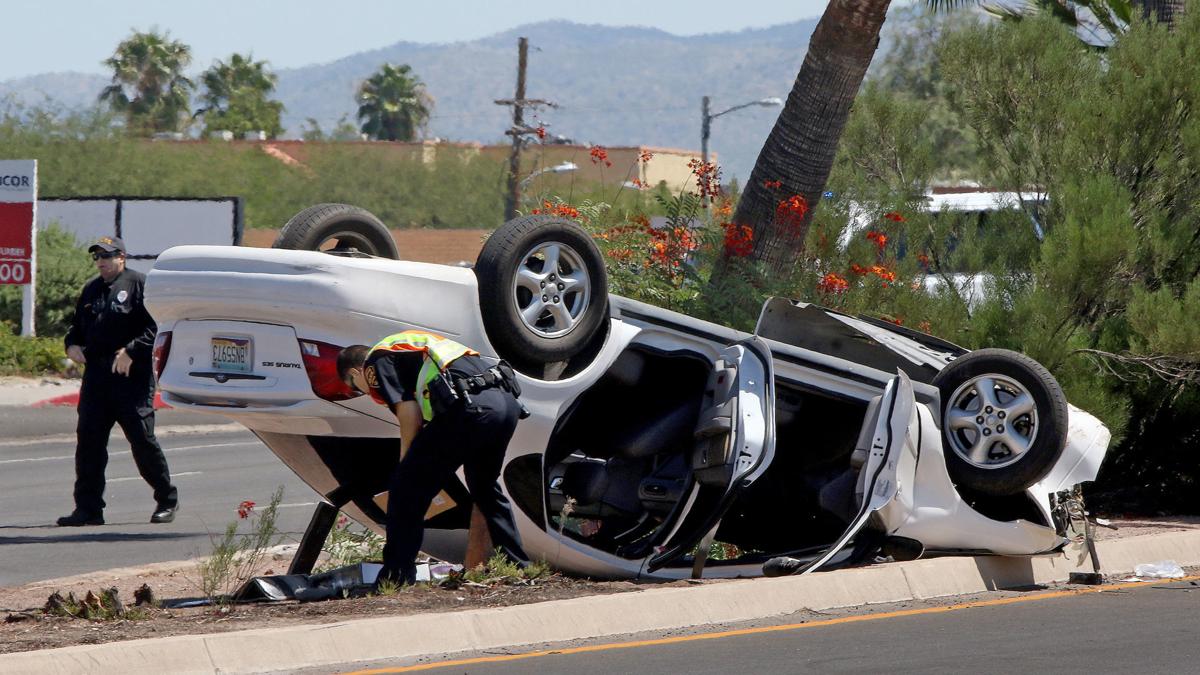PHOENIX — Motorists are going to be able to operate their cars and trucks on Arizona roads with the same level of liability insurance they had to purchase in 1972.
In one of his final acts of the just-completed legislative session, Gov. Doug Ducey vetoed legislation that would have nearly doubled the amount of coverage necessary. Supporters of the measure said it would ensure that drivers can compensate people they injure and damage they cause in crashes.
“I am open to the idea of revising our minimum liability limits,” the governor said in his veto message Wednesday.
But Ducey also expressed concern that increasing those limits beyond what they were when he was 8 years old — he’s 54 now — would make insurance less affordable for those at the bottom of the income scale.
And that, he said, could result in some motorists choosing to drop coverage altogether, even though it’s required under state law and first-time violators face a $500 minimum penalty.
The veto is a major defeat for Sen. Kate Brophy McGee, R-Phoenix, who has waged a multiyear effort to bring the minimum coverage more into line with how costs of everything from medical care to car repairs have changed.
Current law requires motorists to purchase so-called 15/30/10 coverage: $15,000 for injuries to any one person, $30,000 for all injuries from the same mishap, and $10,000 in property damage, usually the other motorist’s vehicle.
During debate on the measure, Brophy McGee said that when those limits were enacted in 1972 she believes there was a presumption they would be adjusted to keep pace with the cost of medical care and the increasing price of vehicles.
That, however, has not happened, with the insurance industry in opposition amid concerns that the higher premiums will equal fewer people buying coverage.
This year’s measure would have boosted the minimum to $25,000 for injuries to one person, $50,000 for all injuries, and $25,000 for property damage.
Once again the proposal faced opposition from some elements of the industry.
David Childers, who lobbies for the Property and Casualty Insurance Association of America, testified during hearings there’s no reason to believe the higher limits are necessary. He cited figures showing that the average liability claim for injuries is about $13,700; for property damage, Childers said the figure is in the $3,000 to $4,000 range.
Brophy McGee, however, said figures gathered by the Arizona Department of Transportation put the average actual losses from a motor vehicle accident resulting in death in excess of $1.5 million. For other injuries, she said, the figure approaches $93,000.
She said the typical property damage done exceeds $11,500 — all more than the insurance motorists are required to carry.
But gubernatorial press aide Daniel Scarpinato said that still leaves unaddressed the question of cost.
“What we wouldn’t want to happen is that people’s rates go up for people particularly on the lower end of the economic ladder who are already struggling to get by who might be forced to either not drive or not be able to afford insurance,” Scarpinato said.
“What we wouldn’t want to have is more people on the road uninsured,” which could raise premiums for everyone else who is covered, he added.
During legislative testimony, attorney Geoff Trachtenberg acknowledged that the higher limits would raise the premiums by $91 a year for motorists who now buy the minimum. But he said lawmakers should consider the trade-offs.
For example, he said, if at-fault motorists have more insurance, that will enable the health insurance companies of those they injure to recoup some of their costs from the at-fault motorist — or at least that person’s insurer. That includes the Arizona Health Care Cost Containment System, which provides health coverage for low-income people earning up to 138 percent of the federal poverty level, about $28,700 for a family of three.
Trachtenberg said if people have more insurance, it should lower the premiums for underinsured motorist coverage. That is optional insurance that motorists can buy to protect themselves if they are in an accident with someone whose coverage does not cover their full medical costs.





